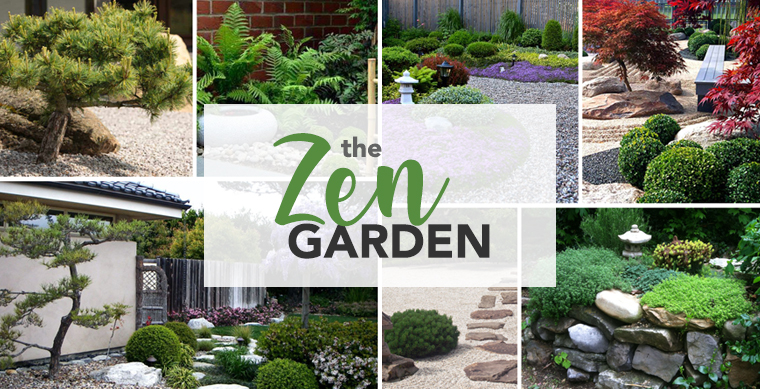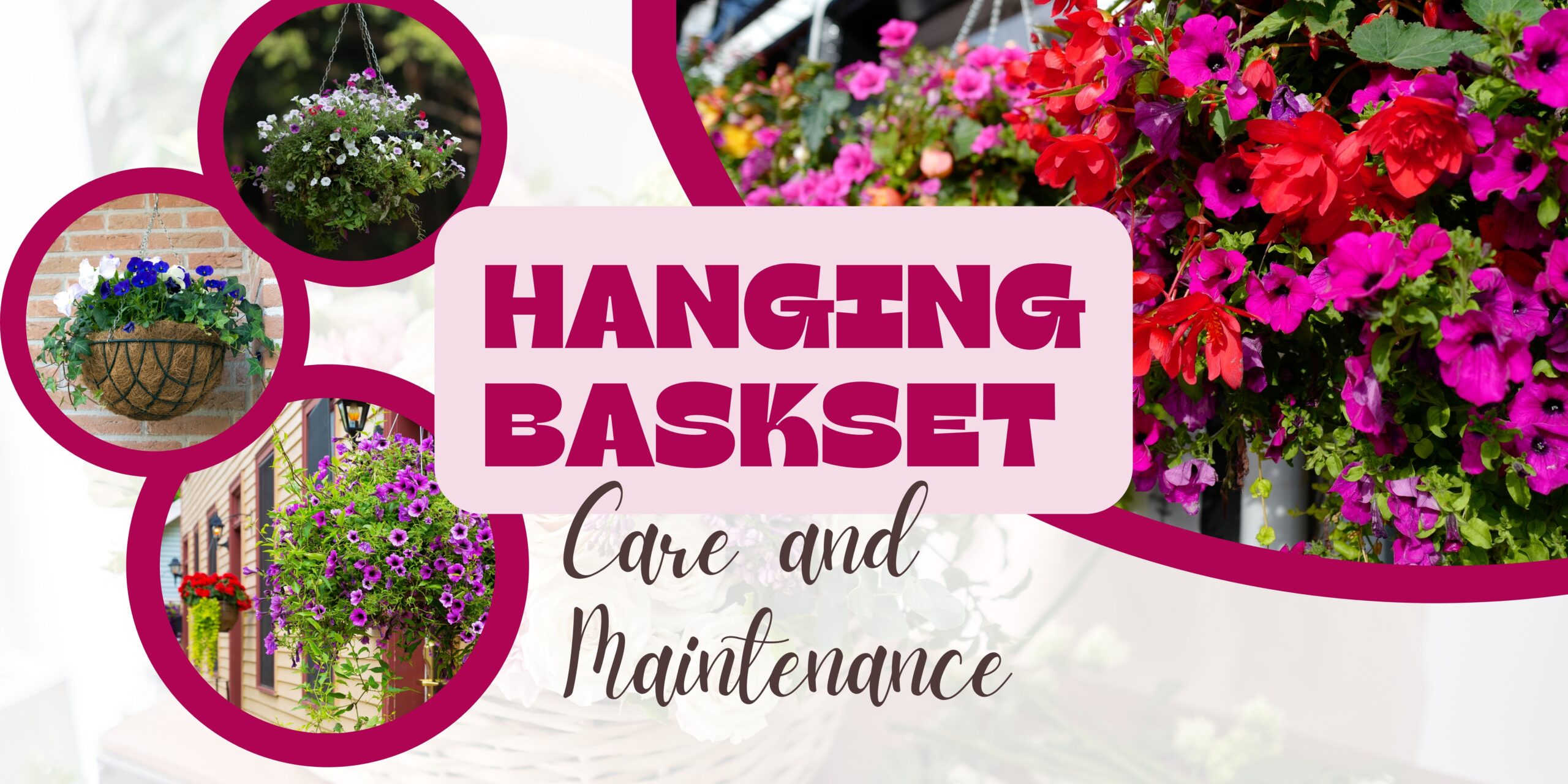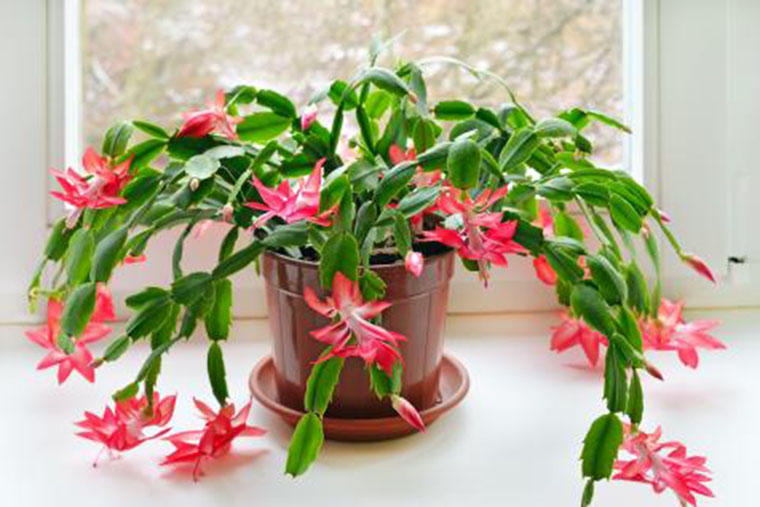The Zen Garden
Many many years ago, a very specific style of rock gardens emerged in Ancient Japan. These gardens, traditionally known as karesansui or dry gardens, were created at temples of Zen Buddhism. They were intended to imitate the essence of nature, not the actual appearance of nature, to serve as an aid in practicing Zen meditation. Zen gardens are usually relatively small and surrounded by a wall, buildings, or some sort of screening. They are typically designed to be visible from a single vantage point outside of the garden. From this vantage point, a miniature stylized landscape is thoughtfully composed through the use of carefully arranged rocks, plants, and gravel or sand. Plants in Zen gardens are usually pruned trees and shrubs that have a sculptural appeal. Gravel or sand is traditionally incorporated to create the visual appearance of dry “water” and is usually raked to give the appearance of ripples in water.
Garden Features
Over the years, Zen gardens have been adapted to include additional features; however, they still remain a dedicated space to aid in quiet contemplation or meditation, whether it be at a corporate office or home landscape.
DESIGN PRINCIPLES: Traditional Zen gardens are designed with 7 principles in mind.
Koko – Austerity
Kanso – Simplicity
Shinzen – Naturalness
Fukinsei – Asymmetry
Yugen – Mystery or Subtlety
Datsuzoku – Unconventional or Magical
Seijaku – Stillness
SCREENING: Zen gardens are meant to be secluded, a place to go inward. Screening helps to block out the outside world and is an important feature to achieve a Zen garden.
ROCKS: An important component in Japanese design, rocks represent the human desire for eternity and enduring elements in nature. Larger rocks can be used as sculptural elements.
GRAVEL or SAND: Most Zen gardens will feature an area of gravel or sand raked into patterns with symbolic meaning. The act of raking itself is meant as a meditative process that helps to improve mental concentration.
WATER: Water is a modern addition to Zen gardens, often incorporated to create a more soothing environment and help drown out urban noises.
PATHWAYS: When incorporating pathways, consider how you want to move through the space and what you would prefer that experience to be like. Pathways can be gravel, stepping stones, or plant-covered – so long as they are clearly defined. Man bridges are often added to zen garden pathways for added ambiance.
SEATING: A designated seating area can provide a great way to encourage spending longer periods of time in an outdoor meditation space. When planning your seating area, be sure to design your space to center around the vantage point of the seating area, adding focal points that can be enjoyed from the seated position.
FOCAL POINTS: Focal points give our eyes something to land on as we sit in contemplation. They stimulate our minds and add interest to the visual experience. Lighting, statuary, and interesting plants can all be used as focal points. Just keep in mind that Zen gardens are meant to be minimalistic in nature and not overstimulating… in other words, less is more!
PLANTS: When choosing plants for a Zen garden you want to focus on two things.
1. Choose low-maintenance prairie hardy plants that have low water needs. Rock gardens and xeriscaping plants will work really well in Zen gardens. For more rock garden plants check out our Rock Garden blog.
2. Choose a few plants to act as focal points, especially if they have interesting and eye-pleasing growth habits, such as a multistemmed maple or tiger’s eye sumac. The mugo pine is another great choice as it can be sculpted to resemble a bonsai-style tree.
Zen Garden Plants
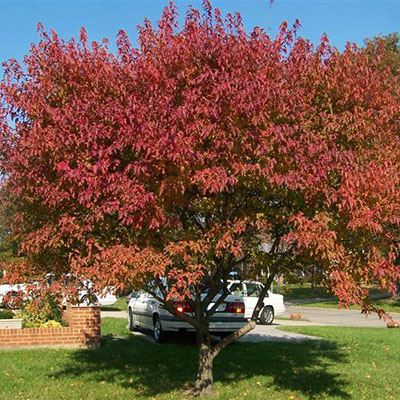
Amur Maple
Acer grinnala
One of the smallest and hardiest varieties in Alberta, available as a single or multi-stem. Sweetly scented creamy white flowers in early spring, with dark green, glossy foliage that turns a brilliant scarlet-red in fall. An ideal choice for small home landscapes.
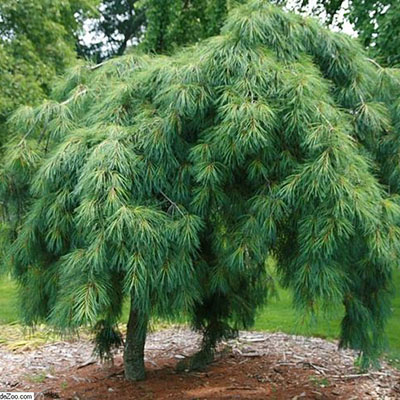
Weeping White Pine
Pinus strobus ‘Pendula’
A weeping and trailing small tree with soft, long bluish-green needles that sit on twisting, dangling branches, producing an irregular form. Needles hold their form and colour throughout winter. It tends to crawl along the ground and over rock walls and can be quite beautiful if properly grown.
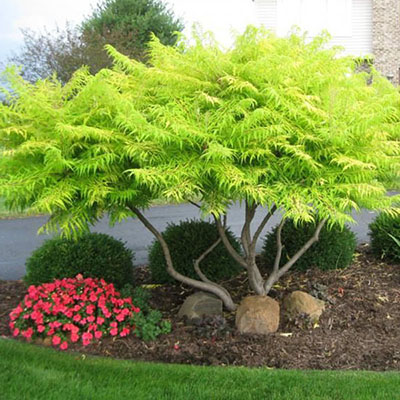
Tiger Eye Staghorn Sumac
Rhus typhina ‘Bailtiger’
A single and multi-stemmed deciduous shrub with a stunning habit of growth and horizontally tiered branch structure. New growth matures to bright yellow. A great garden colour accent, featuring gold-coloured foliage throughout the season turning to a mix of yellow, orange, and red in fall. First Editions plant.
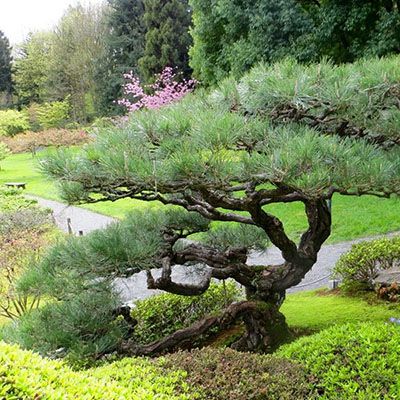
Mugo Pine
Pinus mugo mughus
A hardy, dense multi-stemmed evergreen shrub with an upright, spreading habit of growth that can be sculpted to resemble bonsai. Great for feature focal points as almost no two shrubs are the same. Features short dark green needles throughout the season, holding their colour throughout the winter.
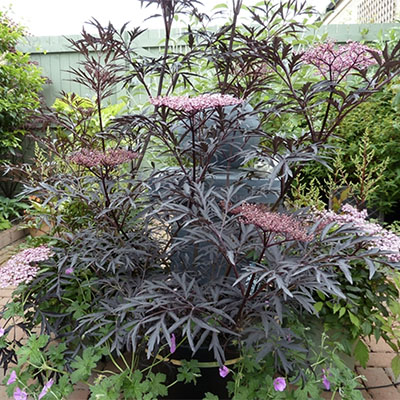
Black Lace Elder
Sambucus nigra ‘Eva’
A fast-growing, multi-stemmed deciduous shrub with an upright, spreading habit of growth. Features finely cut, dark purple foliage throughout the season that keeps its colour through fall. Produces attractive clusters of tiny, creamy white-pink blooms in late spring to early summer, turning to small ornamental deep purple berries in fall. A nice substitute for a Japanese maple- which is not hardy in our climate. Proven Winners plant.
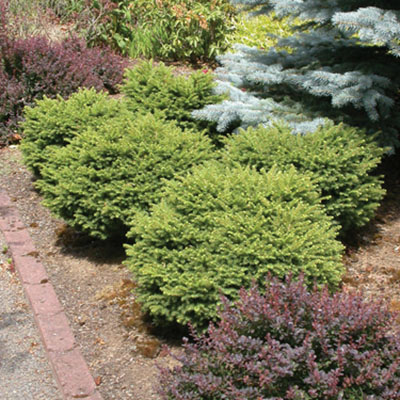
Little Gem Spruce
Picea abies ‘Little Gem’
A dwarf, multi-stemmed evergreen shrub with a compact, mounding form. Features dense, finely-textured rich green needles throughout the season, holding their colour throughout the winter. New growth emerges lime green in spring.
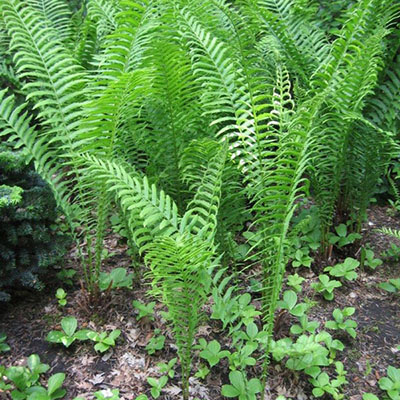
Native Fern
Matteuccia struthiopteris
Ferns come in an amazing array of textures, colours, sizes, and shapes. This selection is one of the most common native Ferns and features a large, upright clump of big green fronds. Cinnamon-brown fertile fronds push up from the center of each clump in summer and remain throughout winter.
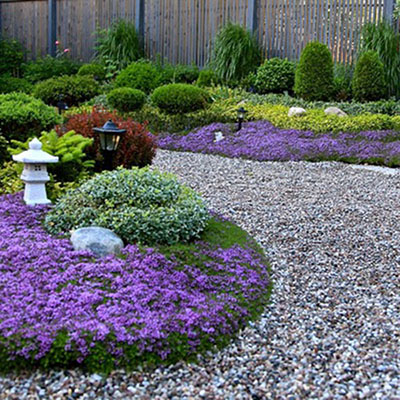
Creeping Thyme
Thymus serphyllum
A highly popular groundcover it forms a dense low mat of tiny round and fragrant dark green foliage throughout the season. Covered in purple flowers throughout the summer.
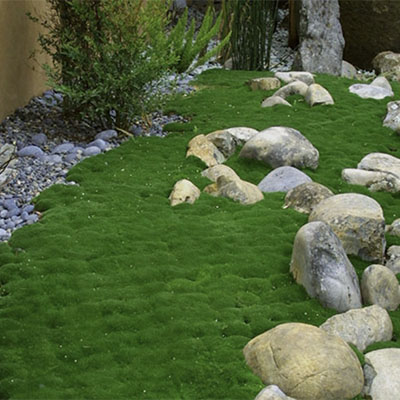
Irish Moss
Sagina subulata
An extremely popular groundcover it features elegant, rich, deep green, moss-like foliage that forms a soft, cushy mat that works well along walkways and between stepping stones. Tiny luminous white flowers add to their beauty in spring and have a lovely light fragrance. Tolerates moderate foot traffic.
 |
| 
